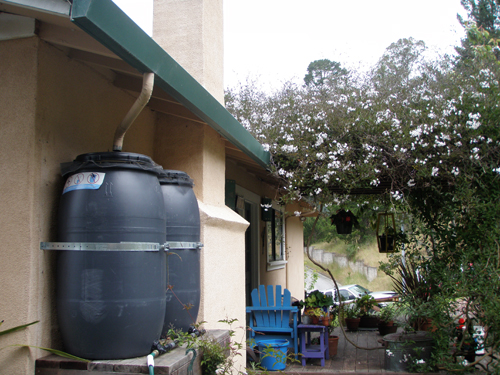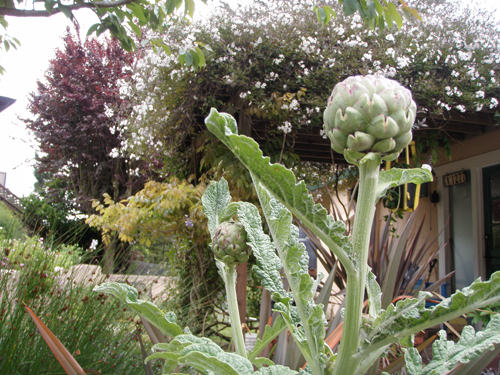Welcome to Taproot
We are dedicated to changing the way Californians use our most precious resource. Through increased efficiency, water-use reduction and water reuse we can ensure our limited and seasonal supply will serve us for generations to come.
Our infrastructure is aging and our population continues to grow, while our reliance on seasonal rainfall and snow pack leaves us vulnerable to changes in weather. It is not a matter of IF our water habits will change but WHEN.
The Water Revolution must begin at home.

Increasing efficiency is usually the least expensive way to begin saving on your water bills.
Make sure to fix any leaking fixtures. Set your irrigation timer to water your plants only as much as needed and don't forget to adjust it for the seasons.
Simple actions such as adding faucet aerators can reduce indoor use by 4% while replacing old toilets and washing machines with newer, more efficient models can cut the average household's water use by up to 20%.
Many counties in the Bay Area offer cash rebates for the purchase of efficient toilets, washers, and irrigation systems.
Contact us today for information on rebates and a free water audit!

Greywater is what flows down the drain from our showers, baths, sinks, and laundry. This non-potable greywater is a valuable irrigation resource on which your plants will flourish. Sending this water to a treatment plant is a waste of both water and energy.
Greywater can be administered in a number of ways, from a simple gravity-fed network of pipes, to filters and pumps distributing water through your existing drip irrigation system.
Contact us today and we will help you decide which system(s) best suits your home and yard!
There is tremendous potential for rainwater capture in the Bay Area. A 1,000 square foot roof surface can capture an average of 13,000 gallons per year! Rainwater is stored in tanks or cisterns until needed and can be used for irrigation, toilet flushing, or washing clothes.
An alternative to storing rainwater can be a rain garden that is built to maximize infiltration and decrease runoff. Using this system, you will integrate your landscaping to keep rainwater out of the sewer and help recharge aquifers.
Click on this rainwater calculator to help determine how much water you have available.
How can I save money on my water bills?
1) Approximately half of all water used in the average home comes from toilets and clothes washing machines. Replacing older fixtures with newer, more efficient models can save you up to 20% of your total water use. Many municipalities offer cash rebates for installing more efficient models.
2)Fix your leaks! A dripping faucet can leak 2-20 gallons/day. A running toilet can lose 5-100 gallons/day. Most leaks are relatively cheap and easy to fix and will save you thousands of gallons of water per year.
Here is a more complete list of things you can do to increase your efficiency (link: Water Conservation Handout)
Are any government tax rebates or incentives available?
Yes! Certain municipalities offer incentives for installing efficient fixtures, rainwater and greywater systems. Send us an email and we will happily help find rebates in your area!
Where does greywater come from?
Greywater is untreated wastewater that has not been contaminated by any toilet discharge, has not been affected by infectious, contaminated, or unhealthy bodily wastes, and does not present a threat from contamination by unhealthful processing, manufacturing, or operating wastes. Greywater includes but is not limited to wastewater from bathtubs, showers, bathroom washbasins, clothes washing machines, and laundry tubs, but does not include wastewater from kitchen sinks or dishwashers.
Water from kitchen sinks and dishwashers is considered dark greywater due to its high volume of organic matter and is not ideal for irrigation. Water from the toilet is considered blackwater and should never be diverted from the sewer.
How can I use greywater?
Greywater may be used for irrigation, either subsurface drip or infiltration basin. It is non-potable, cannot be sprayed aerially, nor should be used to irrigate food crops whose edible parts touch the soil.
There are greywater-to-toilet systems but they are not very cost effective.
Can I flush my toilets with greywater?
There are systems on the market designed to reuse greywater for toilet flushing. However we do not recommend this type of system due to high cost and frequent required maintenance.
A good option might be the Caroma® Profile Smart toilet which has an integrated faucet which is essentially a built-in greywater system.
What kind of plants can I irrigate with greywater?
Fruit trees are the ideal candidate for greywater irrigation, but any shrubs, trees, and bushes also work well. These types of plants allow for easy to install and low maintenance infiltration basin irrigation. Subsurface drip systems can be used for any smaller species.
As greywater is inherently alkaline, certain species of acid loving plants don't do as well with greywater irrigation. Examples include pine, oak, foxglove, blueberries, rhododendrons, azaleas, holly, hydragea, and ferns.
Can I use greywater with my existing sprinkler system?
Greywater is not allowed for spray irrigation. Only subsurface irrigation is allowed. If your lawn is especially important to you there are greywater drip systems specially designed for lawns or a rainwater system may be an even better idea.
Can you use toilet water for greywater irrigation?
Toilet wastewater is considered blackwater and should never be diverted from the sewer.
Do I need to use special soaps or detergents?
Since you will be discharging wastewater into your yard, care should taken as to what you put down your drain. Powdered soaps and detergents contain huge amounts of sodium which will increase the alkalinity of the soil but this can be easily mitigated by switching to liquid soap and detergents. Soaps containing boron, chlorine and other disinfectants should be avoided because of the damage they do to plants and beneficial microbes in the soil. Regular rainfall in our area flushes out the soil each year so that any accidental damage done is only temporary.
Hand soap, dish soap and shampoos won't be a problem under normal circumstances. Soaps and detergents act a fertilizer on which most plants will thrive.
To take it one step further, there are biocompatible cleaning products on the market. Check www.bio-pac.com.
Is there any construction that must be done inside the house?
Every house is different. Some re-plumbing may be required but often this is minor. Each system will be custom tailored to balance the need for greywater with the cost associated with possible construction.
Call or send us an email for a free estimate
Is there any maintenance required?
Some maintenance is required for greywater systems. Depending on the type of system and amount of greywater produced this could be from once every several months to once every year or two.
Taproot offers full maintenance packages so you need not worry about it.
How big are greywater systems?
Greywater systems typically occupy little more space than an existing irrigation system. They can be as large as a 50 gallon drum or small enough to be invisible.
Can I get sick from greywater?
To this date, there have been no documented cases of greywater caused illness in the US.
Will chemicals I put down the drain kill my plants?
To the sewer with you! If you must use toxic cleaning chemicals, all legal greywater systems have an accessible valve which allows you to divert wastewater away from your garden and into the sewer (and eventually our rivers, lakes, and ocean). You may soon find it more convenient to clean with non-toxic alternatives such as vinegar, baking soda, or liquid soap. The planet will thank you.
Is greywater safe for vegetable gardens?
Greywater shall not be used to irrigate root crops or edible parts of food crops that touch the soil. It should not be a problem for any other types of vegetables although thorough washing and cooking of all greywater irrigated vegetables is advised. There has never been a documented case of illness resulting from greywater.
Will greywater work for my rental property?
Certain types of greywater systems are perfect for rental properties. Laundry-to-landscape and simple gravity fed systems are low maintenance and offer regular and hassle-free irrigation for trees and shrubs.
What is rainwater catchment?
Rainwater catchment is the capture and use of rainwater. Rain from the roof is stored in barrels, tanks, or cisterns. It then can be used directly for watering plants or treated for use indoors. Rainwater catchment can also refer to the direct use of roof runoff by utilizing simple earthworks, such as swales, or a rain garden that can absorb large volumes of water.
How much water can I capture from my roof?
The amount of rainwater you can capture is directly related to the area of your roof. A 1000 square foot roof surface catches approximately 600 gallons of water per inch of rain. The Bay Area receives roughly 22” of rain per year although this varies by microclimate. This means a 1000 square foot roof in the Bay can capture 13000 gallons of water per year on average.
Click here to estimate your rainwater capture potential: Rainwater Calculator [Maybe just have the calculator here instead of some link? Youre the scientist]
What can I use rainwater for?
Without treatment rainwater can be used for irrigation. With some simple treatment it may be used for toilet flushing. Currently (2011) there are no regulations regarding surface water collection and its use will vary depending on individual city inspectors.
Can you safely drink rainwater?
With the cheap cost of drinking water in California, this would be unnecessary. It requires a degree of treatment that is both expensive and labor intensive.
Will tar and roofing chemicals runoff into the catchment system? What issues could this have for my health and the health of my garden and the environment?
There should be no ill effects. Since most municipalities allow for gutters to empty anywhere on your property, water from your roof is probably already running into your yard.
How big are rainwater catchment systems?
The size of the system depends on how much water you want to store. How much water you want to store will depend on how much space you have and how much you want to invest. This can range from 50 gallon barrels to 2000 gallon tanks to buried 10000 gallon cisterns.
To schedule a free water efficiency audit or a free estimate please call or email us!
We will happily answer any questions regarding greywater irrigation, rainwater capture, and water efficiency!
Don't hesitate; the future of California's water supply depends on all of us doing our part!
Wes Parks
415-519-6695